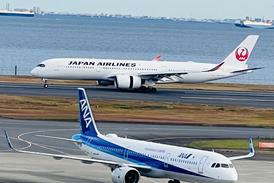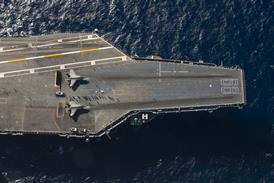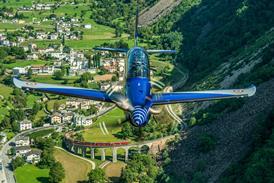Developing an erroneous mindset and being unable to recognise reality is common and can be dangerous. There is only one defence
The questions that arise from the tragic Comair Bombardier CRJ200 take-off crash at Lexington are familiar ones. But the fact they are familiar does not mean they should be taken any less seriously.
Based on National Transportation Safety Board (NTSB) information released so far the following information is established: the crew turned on to the wrong runway in the pre-dawn twilight, despite the fact that it was unlit, while the runway for which they had accepted take-off clearance was lit. Early in their take-off roll the pilots would have seen that they had crossed the fully lit main runway.
The following statement is based on two facts released by the NTSB, but at this stage it is still something of a projection of the little we know: the cockpit voice recorder reveals that one of the pilots commented - during the roll - that the runway was unlit. This may have signalled the slow dawning of uncertainty. But by the time the crew realised how drastically short the runway was it seems they decided the best chance of survival lay with getting airborne, even if that meant rolling across ground beyond the tarmac. That projection is based upon the NTSB statement that the flight data recorder was still showing aircraft acceleration when its recording stopped. But the timelines have not been reconciled yet, so nobody knows exactly where that point was.
What happened shows the power of a predetermined human mindset. If you think what you are doing is right, you bend the facts you observe to fit the picture you expect to see. If the two do not tally, instant decisions based on the mindset will win. A mindset might yield to reality if the brain has plenty of time to ponder the situation, but even that is not guaranteed. In flightcrew decision making, time is a commodity that is often not available.
Checklists, drills and standard operating procedures (SOP) exist primarily to counteract this common human characteristic as well as failures of the memory. Cockpit automation and smart warning systems now provide some insurance against straying outside correct procedure or flight envelopes, but there are still hundreds of areas in which they do not. In those areas, SOPs remain the only defence against the power of the erroneous mindset. From our armchairs it is easy - but valid - to ask: did the crew not check the compass and the heading bug position when they were lined up ready to roll? Checking the runway lights are on is a good idea, but not an SOP - it is just one of those things a pilot assumes he will not fail to notice but history proves that zero lighting, or taxiway lighting where a runway should be, is no deterrent to a mindset.
This accident could have happened in any aeroplane type, but it is valid to ask whether, in a classic cockpit, the crew would have been more inclined to stick to SOPs. Asked another way the question reads: does automation and reliability make pilots feel SOPs are superfluous? Or was this a circadian rhythm issue because crew duty began at 05:00? Whichever it was, SOPs are the only defence.
Source: Flight International























